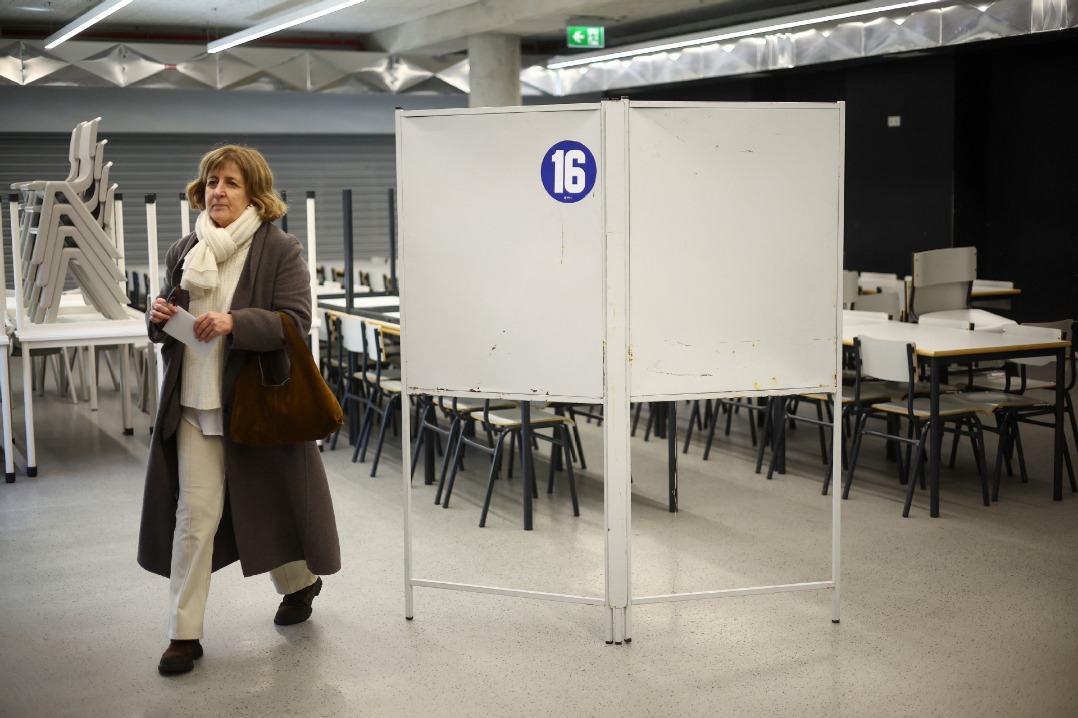Wildfires reshape California’s market for home insurance


Vida Hamadani felt the impact of the wildfires in California when she had to flee her Brentwood home two weeks ago.
Although she and her family escaped the Getty Fire and their house wasn't damaged, Hamadani is worried about a potential increase in home insurance premiums that could affect many homeowners, including an insurance agent such as herself.
"Many policies have become twice as expensive, more than triple with the premium, and, of course, I see a lot of unhappy clients dealing with this high premium, and my understanding and belief is that due to this recent fire, it's going to make it even more expensive," said Hamadani, who owns a namesake insurance company in Los Angeles.
Amid the growing frequency and severity of California's wildfires, insurance companies are facing huge payouts. To avoid catastrophic losses, some are increasing prices and canceling policies, especially in fire-prone areas, leaving many homeowners without adequate coverage.
Thousands of people have been displaced from their homes up and down the state as blazes as the Getty, Kincade and Saddle Ridge blazes, fanned by violent Santa Ana winds ripped through communities.
Wildfires have become a common occurrence in the state in the past few years. The most recent ones scorched more than 250,000 acres and resulted in three fatalities and billions of dollars in damages.
Insurance companies fielded nearly 45,000 claims totaling more than $11.79 billion in losses from wildfires in October and December 2017, the California Department of Insurance (CDI) reported.
Insured losses from 2018 topped $13 billion, according to the agency. The main drivers of the claims were the Camp Fire in Paradise and Butte County, and the Woolsey and Hill fires in Los Angeles and Ventura counties, all of which started in November 2018, described as the most destructive wildfire month in California's history.
In an email to China Daily, CDI said it doesn't have insurance loss numbers for 2019, "but the scale of losses does not approach last year's record losses''.
Many insurance companies reeling from massive payouts of the recent fires are dropping homeowners who live in or near an area where a major fire occurred.
Many homeowners in fire-prone areas often must scramble for replacement policies because their insurance companies send them a non-renewal letter sometimes just 60 days prior to the renewal date of their existing policies, Hamadani said.
From 2015 to 2018, the number of new and renewed homeowners' policies fell by 8,700 in 10 counties with the most homes in high or very high-risk areas, according to CDI data.
Those counties saw a 177 percent growth in new FAIR Plan (Fair Access to Insurance Requirements) policies, compared with only a 4 percent increase for the five counties with the lowest risk.
"We have a lot of customers that are unable to get homeowners insurance, because the insurance carriers have become so strict as to what they are willing to accept," said Tim Gaspar, CEO of Gaspar Insurance Services in Woodland Hills, California.
Gaspar said home insurance rates have been steadily increasing over the last two years, in part because the companies must pay for claims they previously didn't have to pay.
Courts and lawmakers have become more liberal in what they are asking insurance companies to pay, he said. For example, many insurance companies excluded damages from mudslides. But after wildfires triggered mudslides in Montecito in 2018, the CDI issued a formal statement reminding insurers to cover damage from a mudslide if an insured danger, such as fire, was the cause. "The reality is these wildfire claims don't affect just the people living in wildfire areas, they have an impact on the entire homeowner marketplace in California. Regardless of where you live, you are probably going to see some sort of an increase," Gaspar said.
According to ValuePenguin, the average annual home insurance rate in California could range from $711 to $1,424, depending on how risky that location is.
Janet Ruiz, California's representative for the Insurance Information Institute (III), an industry association, said homeowners who don't live in high fire-risk areas won't see their premiums go up for a while, despite the potential increase in rates.
It might take four to 18 months for insurers to increase their premiums, she said. Insurance companies must submit their request to the CDI, which considers many factors before granting approval.
Ruiz explained that non-renewal is a normal process that insurance companies go through to balance their risk to make sure they can pay claims in major catastrophes.
"So what happens is one company may not be able to write any more, another company may have too much, and they might need to non-renew some of the policies. Then another company might still be able to write insurance in that area," Ruiz said, adding that companies usually give homeowners 45 to 75 days' notice before terminating policies.
"This has always been the case, it's no different now. The thing that is different is that we are having a lot of wildfires, where we didn't use to have so many, or so, so much damage, and so we have to be even more careful about that," she said.
According to a 2017 wildfire risk analysis by Verisk, a data analytics company, 4.5 million US homes were identified as being at high or extreme risk from wildfires, with more than 2 million in California alone.
Researchers at the Harvard School of Engineering and Applied Sciences predict that by 2050, the probability of large fires in the western US could double or triple.
A dry climate exacerbated by a rise in temperatures attributed to global warming has led to drier and more combustible vegetation. Reduced logging left more timber on forest grounds that could become fuel.
At the same time, a growing urban population spread to previously uninhabited forest areas, making more communities and properties susceptible to fires.
"I have heard from many local communities about how not being able to obtain insurance can create a domino effect for the local economy, affecting home sales and property taxes," state Insurance Commissioner Ricardo Lara said in a recent statement.
In July, Governor Gavin Newsom signed into law a $21 billion wildfire insurance fund. It protects homeowners from skyrocketing rates while requiring electric providers to pay for damages linked to their equipment.
The California FAIR Plan is an insurance pool of all licensed property insurers established in the 1960s to assure the availability of basic property insurance for those who can't get insurance on the standard market.
The CDI said the FAIR Plan has agreed to expand coverage to $3 million and it's looking at other steps to make the plan "a more effective backstop for consumers".
"Three million is still not going to be enough for some people, but it is going to cover a lot more people than it does now," Gaspar said.
Contact the writers at teresaliu@chinadailyusa.com

































